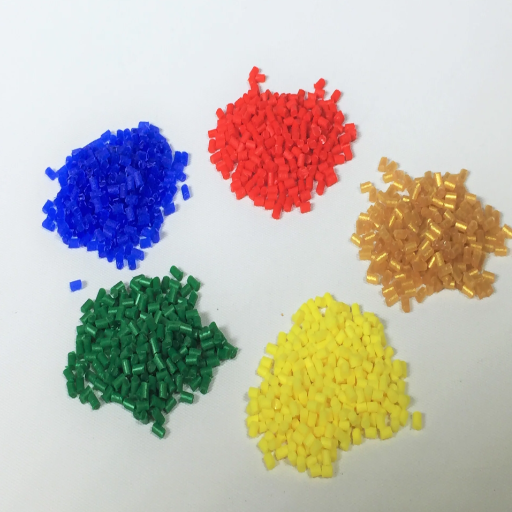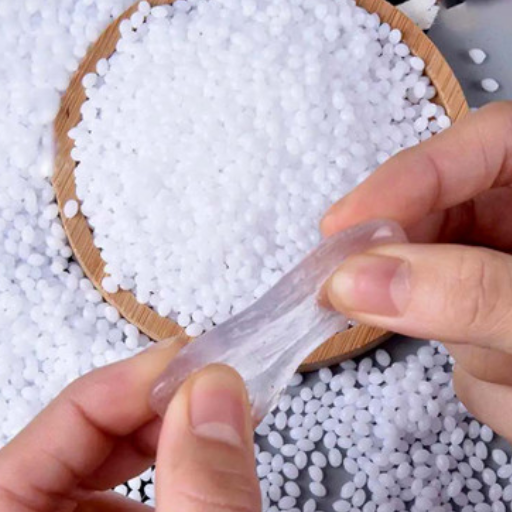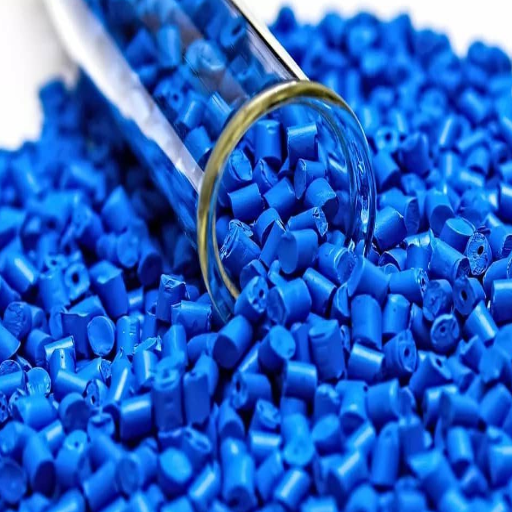The polyetherimide (PEI) sector has gained a competitive edge, as it is seen as one of the most advanced and adaptable materials used for modern-day engineering and manufacturing. This advanced polymer, due to its high mechanical strength, exceptional thermal stability, and commendable chemical resistance, is revolutionizing avenues in the aerospace, automotive, healthcare, and electronics industries, among others. In the subsequent sections, we will examine the distinctive properties of PEI, its scope, and its benefits in engineering futuristic designs. Whether an engineer is trying to figure out which material to use for a specific task, resulting in doing so much research, or a layman who just wants to understand high-performance plastics, he or she would find help from this material as it explains the reasons as to why PEI is a disruptive material. This cutting-edge polymer has so much to offer the engineering fraternity, and together, let’s explore its wonders and contribution to engineering design advancement.
What is PEI plastic, and why is it considered a high-performance material?
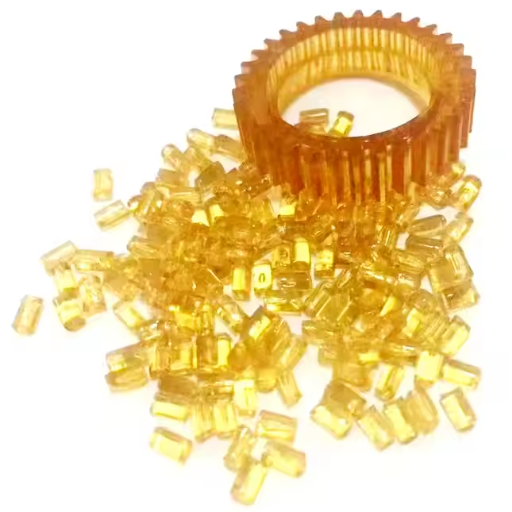
Polyehrimide(PEI) possesses extraordinary mechanical, thermal, and chemical resistivity, which qualifies it as a high-performance structural thermoplastic. Furthermore, The glass transition temperature approximates 217C (423F), making it possible for aerospace, automotive, and medical applications because of its hindrances to high-temperature use. Its high-performance electric and electronic components are due to superior dielectric properties alongside excellent dimensional stability and flammability characteristics. The set of engineering polymer properties gives PEI per se a unique parameter that retains the engineering form under extreme parameters.
Defining PEI: Polyetherimide and its chemical structure
Polyetherimide(PEI) is a thermoplastic that is synthesized from aromatic moieties, contributing to its mechanical strength by containing an imide group (-CO-N-CO-) linked with ether bonds(-O-). Regarding its chemical makeup, PEI contains gross aromatic units forming the polymer’s backbone, which helps with chemical and high-temperature resistance. The polyamide possesses a highly rigid backbone because of the step-growth polymerization of conglomerating bisphenol-A Dianhydride (BPADA) and diamines. The group contributes to the structural integrity of the polymer since it has a melting temperature between 340 and 170 degrees Celsius. Besides giving it structural stability, these electronic configurations also form the backbone of the insulating polyamide, making it well-suited to challenging engineering applications.
The unique properties that make PEI a high-performance thermoplastic
PEI is a high-performing thermoplastic because it combines good mechanical, thermal, and chemical properties. It guarantees impressive tensile and impact strength, providing potential structural impairments in harsh conditions. It can withstand heat of up to 340 °F (170 °C). This highlights its potential to be used in extreme environments. In addition, PEI has good moisture permeability. This, along with its good electrical insulation, makes it ideal for use in electronic and aerospace-confined components. These and its good chemical stability and flame retardant properties further highlight why PEI is essential in manufacturing engineering products.
Comparing PEI to other engineering plastics
Interestingly, Polyether imide (PEI) differs from most engineering plastics because it has good mechanical properties and heat resistance. Furthermore, PEI’s ability to withstand high temperatures complements its superior heat resistance, unlike polycarbonate (PC). Given this context, PEI is better suited for harsh conditions; however, its cost may make its use in applications where PC can be used in impractical ways.
It is clear that in specific situations, PEI might yield better strength than PPS; however, PEI comparison is more likely with PPS than being compared with PPS. On the contrary, PPS has slightly eroded performance in chemical operations with strong bases and acids, but overall, PPS is a good performer. Moreover, thanks to better dimensional stability and PEI’s relatively better processability, PEEI has advantages regarding precision components and complex geometrical shapes.
Compared to PEEK, PEI is less expensive because it has flame resistance and temperature; however, in applications where higher chemical and mechanical strength is not required, PEEI can work. Breathing plastic has a few downsides in applications such as injection molding. While most materials have their strengths, in this case, a compromise has to be made about what is more suitable in terms of performance, cost, and intended use.
What are the key properties and advantages of PEI plastic?
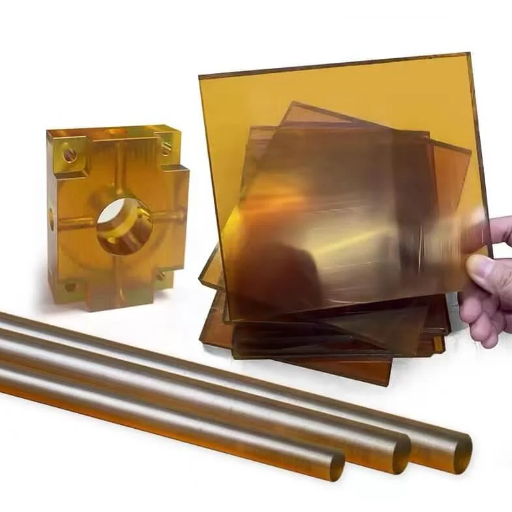
In various high-temperature applications place such as the aerospace, automotive, and electronics industries, where PEI is often used, cut-offs have to be made from an intricate mold, which is an incredibly cheap flame-reduced thermoplastic with thermal stability and mechanical endurance among a few of its many traits, it has a simple add for safety impact due to its flame resistant properties. With no scaling issues, it claims to work at a continuous temperature of 340°F or 170°C. Further claims of PEI include good electrical insulation and the ability to withstand chemicals such as hydrocarbons and alcohol.
Mechanical properties: Strength, rigidity, and dimensional stability
Polyetherimide (PEI) has remarkable mechanical characteristics, such as high tensile and compressive strength, which help it withstand mechanical loads in different circumstances. The high dimensional stability of PEI minimizes its deformation under thermal and mechanical loads, making it ideal for manufacturing precision parts that work in a fluctuating environment. The material has a high elastic modulus, which adds to its stiffness and compressive strength, which allows PEI structures to resist deformation even under compression loading. This feature is benefited by a relatively low creep rate, which helps PEI retain its shape and functionality after prolonged stress and heat exposure. As a result, PEI is often used in fields where high-quality materials are needed, especially in load-carrying components or in harsh environments where structural integrity is of utmost importance.
Thermal properties: Heat resistance and high-temperature performance
The other prominent feature of PEI is its thermal and elevated temperature stability, which indicates it can be used in harsh environments. The working temperatures for PEI recommend Tg at approximately 217ºC and a continuous usage temperature above 170ºC where its mechanical and dimensional stability is reasonably intact when exposed. These characteristics guarantee that its performance is not affected in scenarios of exposing it to high temperatures for an extended period, such as in the aerospace or automotive sectors. Moreover, its natural ability to withstand thermal degradation gives it assurance and durability even with harsh applications.
Electrical properties: Insulation and dielectric strength
Due to its excellent electrical insulation characteristics, polyetherimide (PEI) is ideal for use in areas where dielectric reliability is a key requirement. Its dielectric strength, often about 830 V/mil, indicates that this material can sustain high breaches without collapsing. In addition, PEI has a comparatively lower dielectric constant (specifically around 3.15 to 3.9, depending on the grades) and a low dissipation factor, enhancing its ability to conserve energy during electrical insulation. Because of these traits, PEI can perform in a wide range of temperatures & frequencies, which is critical for many electrical & electronic applications, such as capacitors, boards, and insulation parts that operate in harsh environments.
How is PEI plastic processed and manufactured?
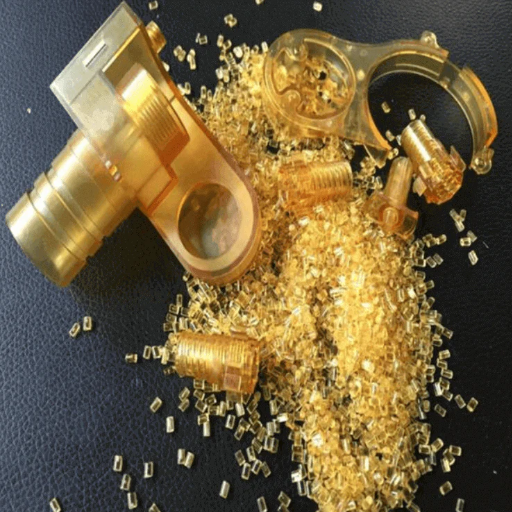
PEI (Polyetherimide) plastic can be produced using injection molding, extrusion, or compression techniques, depending on the product’s intended use. The injection molding process starts by heating PEI resin to a temperature where it becomes molten and flowing, then injecting it into a mold to produce intricate parts. The extrusion process produces rods or tubes by forcing the molten element through formed openings. As for the other applications, compression molding involves placing the resin in a reasonably hot mold and then compressing it under pressure, thus shaping it into the required shape. In manufacturing, PEI requires adequate drying before use to limit the moisture content, as moisture can negatively affect mechanical capabilities and PEI’s uniformity during processing. These methods ensure the manufacturing of superior-quality PEI components that are resistant to high temperature and pressure and are thus suitable for high-end industrial applications.
Injection molding techniques for PEI plastic
The injection molding of PEI (Polyetherimide) is very sensitive in controlling the processing parameters. Depending on the machine used, the PEI processing temperature may vary mainly from 340°C to 400°C. A recommended 140°C to 200°C ensures proper flow and surface finish while reducing internal stresses developed within the final product mold. Furthermore, the injection process requires a moderate speed, whereby excessive heating through the shear will not lead to wearout. The PEI resin’s moisture needed for processing must also be under 0.02%. Hydrolytic degradation of PEI may negatively affect the molding’s overall dimension and mechanical qualities due to excess moisture.
Developing a concentrating gated design is crucial in the injection process of Polyetherimide, whereby edge or direct gates can be used to promote soldering and dampen stress concentration strain. Gas or air bubbles resulting from the molding process in the joint components can be taken care of by using any vents and proper degassing. For additional measures, mold-induced residual stresses can be relieved, thus enhancing the overall product through post-molding annealing. Considering the mentioned factors, it is clear that the molding components of PEI are suitable for the medical, aerospace, and automotive industries because PEI is a reliable thermoplastic material.
Machining PEI: Challenges and Best Practices
Due to the strong characteristics coupled with the considerable brittle nature of PEI (Polyetherimide), some problems are witnessed during machining, as I have learned from practice. When performing high-speed machining operations, heat generation must be kept in check not to cause thermal degradation or distortion of the machined material. Furthermore, the use of sharp carbide-tipped tools at proper feed rates reduces chipping and increases accuracy. Also, complete vibration control in the tool fixtures and work holding helps avoid vibration. All these factors, if ignored, can lead to defects in dimensional tolerances and poor surface finish. I recommend using slower and calmer cutting speeds to sap heat for the best results. These practices also help remove the worst effects associated with the machining issues posed by PEI while assisting the production of consistent, high-quality PEI components.
Other processing methods for PEI resin
Injection molding is suitable for creating intricate forms precisely. The injection molding method uses an appropriate coolant to manufacture polyetherimide(PEI). However, it is preferable to maintain resin melt temperatures between 370–410°C and mold temperatures between 140-180°C to achieve adequate temperature balance across the form and mitigate material loss.
An alternative technique would be the extrusion technique, usually used for manufacturing sheets, films, or rods. Even distribution and appropriate die configuration are critical in ensuring the uniformity of the extruded products. For extrusion, the parameters have to be alongside controlled cooling and an almost similar thermal window as that of injection molding.
In addition, thermoforming is also possible in some circumstances, especially where the components will be made with lightweight and high strength-to-weight ratios. 200°C to 250°C PEI sheets are placed in molds and then heated and formed to the required shape, but after heating, molding, and forming, care is taken to avoid warping PEI sheets during cooling.
Ultimately, the geometry of the parts, the required performance, and the part’s practicality determine which method to process the PEI resin. Each method has pros that take advantage of the characteristics of the PEI material, such as high resistance to temperature, flameproofing, and good mechanical strength.
What are the typical applications of PEI plastic?
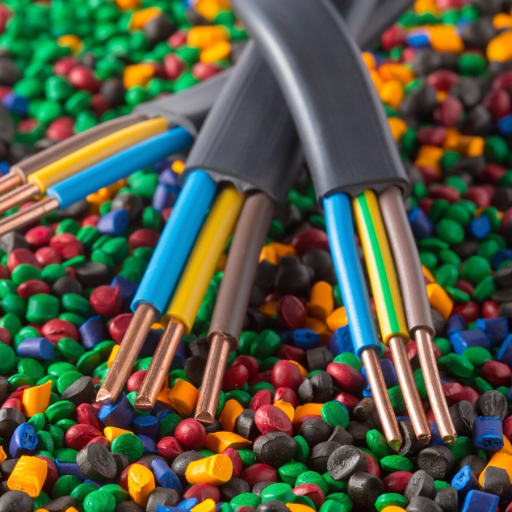
The library of high-performance polymers is said to be interchangeable, as evidenced by multifaceted polymers with various properties, which perform incredibly diverse functions. However, from the context of general development and engineering of aerospace and automotive components, polyetherimide could be of more significance, owing to its properties that greatly suit the fibrous and polyetheric composition, enabling it to attain a seamless strength-to-weight ratio. The typical engineering combinations include connectors, sockets, superstructure lock cyclings, switch housings, and other aerospace-relevant devices owing to PEI’s superior insulation properties and excellent heat deflection temperature. Moreover, it can be sterilized and autoclaved, making it effective in fabricating medical devices.
The aerospace and automotive industry uses
Due to the above attributes, polyetherimide is widely used in composite panels as a primary structural material for lightweight PMC aircraft. Subsequently, its robust mechanical properties and heat resistance present some stark advantages, such as making parts that can withstand the severe thermal/ mechanical stresses encountered in aerospace applications. Its potential to replace metal composites is phenomenal, given the bulk of composites consisting of heavy metals; replacing toxic heavy metals is significant. Coupled with its flame resistance qualities due to low thermal conductivity, there is a high chance of it making a prime candidate for aircraft components. The naval and automotive industries can significantly benefit from these applications due to the increased performance metrics and elevated fuel efficiency.
Medical device applications and sterilization compatibility
Polyetherimide (PEI) has exceptional features such as chemical stability and high mechanical and thermal strength that qualify it for use in the manufacture of medical devices, such as surgical tools and diagnostic and implantable devices. It is also highly resistant to chemical sterilants such as ethylene oxide, steam autoclaving, and gamma radiation, which makes it suitable for sterilization processes. This combination of thermal and chemical resistance reduces the risk of material breakdown due to several sterilization rounds, enhancing the quality and lifespan of medical-grade devices. Furthermore, PEI biocompatibility meets the requirements of regulatory agencies, which helps gain trust in high-pressure medical applications.
Electrical and electronic component manufacturing
Polyetherimide (PEI) is extensively employed in producing electrical and electronic components due to its excellent thermal properties, high dielectric strength, and self-extinguishing ability. These properties make PEI useful for high-temperature and high-voltage applications where safety and reliability are essential in specific electronic devices. Connectors, insulators, and other unique precision parts with tight tolerances benefit from low moisture absorption and excellent dimensional stability of PEI.
Finally, PEI’s strength enables it to continuously perform well across the most challenging operating conditions, including high-temperature environments, creep, and mechanical stresses. It can perform even in elevated temperatures while ensuring the maintenance of electrical insulating properties, which meets UL 94 industry requirements for flame resistance and IEC regulations for electric insulation. For these reasons, PEI is an ideal material for manufacturers looking to target the cutting-end market of consumer electronics, automotive systems, and industrial equipment, as the requirements for these systems are stringent.
What are the limitations and challenges of using PEI plastic?
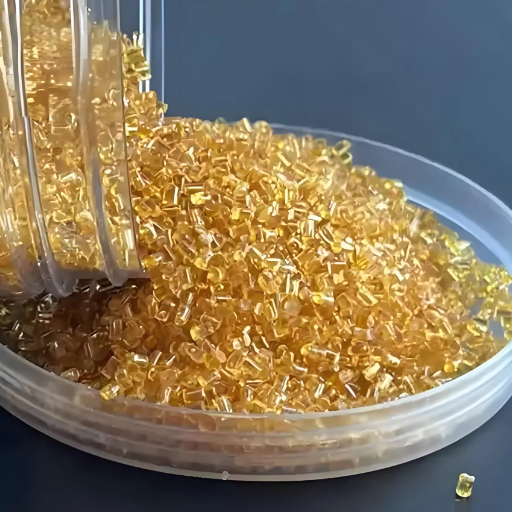
On the other hand, PEI plastic has excellent thermal, mechanical, and electrical properties. However, it has drawbacks. Its cost is one of its main challenges as it is considered expensive compared to other engineering plastics, making it unsuitable for cost-sensitive applications. Another challenge is the processing of PEI, as it requires high temperatures and specialized equipment, making the manufacturing process more complex than it already is. However, PEI has a limited degree of chemical and solvent resistance against strong acids, bases, and organic solvents, which makes it less applicable in chemically harsh places; a high degree of temperature may degrade PEI and increase brittleness, which would make the product more vulnerable to breaking from impact. These factors should be thoroughly considered before selecting the appropriate material and optimizing its strengths.
Cost considerations and material availability
Compared to polycarbonate or nylon, one of the main issues regarding using Polyetherimide (PEI) is its cost. The resins are costly due to the substantial cost attributed to fabrication processes in which PEI is used, improving PEI’s thermal and mechanical features. The prices because of the form or the nature of the material required may also differ with region or the market demand. The only difference is that the conventional polymers are produced in bulk while the other polymers are produced in lower volumes.
PEI is one of those polymers that ought to consider the availability of materials. It is produced in bulk by almost all leading industrial chemical companies, and only specific grades or custom blends take longer to deliver. Regarding time schedules, region availability could also affect the time when the order is placed when there are constraints on global supply chains. As a result, they should consider that exceptional grades are poorly produced, which may result in increased costs and waiting time.
Processing difficulties and potential solutions
Issues related to processing PEI can be traced back to overheating processed materials to temperatures over 371 degrees Celsius or 700 degrees Fahrenheit and its capacity to hold moisture contents. To solve such issues, it is possible to perform pre-dry procedures beforehand to reduce residual moisture contents, as little moisture could lead to hydrolysis during the molding process. Furthermore, it is necessary to use tooling and machinery that can operate at high temperatures to guarantee a steady supply of material to the mold and sufficient quality of the part. Temperature controls help avoid overheating the part while targeting optimum operating conditions when utilized throughout the process. When dealing with special grade PEI, careful tuning of process parameters will lead to achieving the required result quickly.
How does PEI plastic compare to other high-performance thermoplastics?
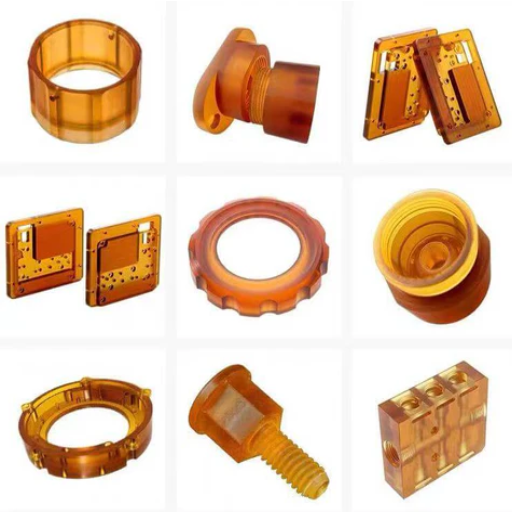
PEI plastic is considered high-performance thermoplastic and maintains a constant service temperature of up to 374 degrees Fahrenheit (190 °C). This improves other thermoplastic materials, such as polyphenylene sulfide (PPS) and polyether ether ketone (PEEK). One key point about PEEK is that it tends to be more complicated than PEI; however, PEI is cheaper and helpful for applications with high dielectric strength. There are also safety concerns, which are easily satisfied by PEI thanks to its low chemical flammability and low smoke emission. It is easy for any major corporation to see why PEI would be appealing; there are endless applications where a substance as versatile as PEI would be beneficial.
PEI vs. PEEK: Similarities and differences
Many advanced applications utilize polyetherimide (PEI) and polyetheretherketone (PEEK), which are high-end polymers. While these substances share the harmful properties of thermal stability, chemical resistance, and mechanical strength, the two polymers differ widely in composition, cost, and application.
One significant difference is their capability to retain shape and strength when subjected to high temperatures. PEEK can perform better, however, than PEI, as PEEK can heat up to 260 C without losing its structure, while PEI’s maximum heat it can withstand is up to 180 C. Second, both polymers have excellent chemical resistance, with PEEK performing better in harsh environments as it is less susceptible to strong chemicals such as acids and organic solvents.
PEI is weaker in several mechanical properties such as impact, wear, and tensile strength compared to PEEK; hence, its usage in automotive and oil and gas industries has some limitations. PEI is preferred in the aerospace and electronics industry as it is cheaper, has better weight, and has flame-retardant features. Also, the usage of PEI saves up on the final product’s weight as it has comparatively low density.
Another point of consideration is the cost. PEEK will always be expensive due to its complex properties and the advanced processing needed to form it, unlike PP, which is relatively cheap and performs its intended purpose. As for the applications, consider all variables, including temperature, mechanical usage, contact with chemicals, and budgetary parameters, alongside the choice of PEI or PEEK.
Comparing PEI to polyimide and other advanced polymers
It is evident that compared to polyimide and various other advanced polymers, PEI is somewhere in the middle regarding performance characteristics. And though polyimides have excellent thermal stability and an impressive ability to resist high temperatures, they are more complicated to process and much more expensive. On the other hand, PEI has excellent mechanical and dielectric properties, but cost-efficiency is preferred due to its engineering applications. For the engineering applications that PEI best fits, PEI has thermoplastic properties and moderate heat resistance, making it an ideal choice for strength and dimensional stability.
References
Frequently Asked Questions (FAQ)
Q: What is Ultem®, and how does it relate to PEI plastic?
A: Ultem® is a brand name for Polyetherimide (PEI), a high-performance amorphous thermoplastic known for its exceptional strength, heat resistance, and chemical stability. PEI material, including Ultem®, is widely used in various industries due to its excellent material properties and versatility in plastic machining applications.
Q: What are the key material properties of PEI?
A: PEI plastic properties include high tensile strength, stiffness, and chemical resistance. It maintains its mechanical strength at elevated temperatures, has good electrical properties, and offers superior flame resistance. PEI is also known for its dimensional stability, low smoke emission, and resistance to creep, making it an ideal choice for many engineering applications.
Q: How does PEI compare to other engineering thermoplastics?
A: PEI is considered a high-performance engineering thermoplastic, offering superior strength and rigidity compared to other plastic materials. Its high-temperature resistance, chemical stability, and mechanical properties make it stand out among other thermoplastics. PEI’s unique characteristics often make it the material of choice for demanding applications where other plastics may fall short.
Q: What are some common PEI grades and their applications?
A: Several PEI grades are available, including unfilled and reinforced options. Unfilled PEI grades, such as Ultem® 1000, are used in applications requiring high purity and transparency. Glass fiber reinforced grades like Ultem® 2300 offer enhanced mechanical strength and stiffness, suitable for structural components. PEI applications span industries, including aerospace, automotive, medical, and electronics, where high performance and reliability are crucial.
Q: What are the advantages of using PEI for plastic machining?
A: PEI is an excellent material for plastic machining due to its high dimensional stability and ability to maintain tight tolerances. Its high strength and rigidity allow for creating complex machined plastic parts with excellent surface finish. PEI’s thermal stability also means that machined parts retain their shape and properties even under high-temperature conditions, making it ideal for demanding applications.
Q: Are there any limitations of PEI that should be considered?
A: While PEI offers numerous advantages, it does have some limitations. It can be sensitive to certain solvents and may be prone to stress cracking under certain conditions. PEI is also relatively expensive compared to some other engineering plastics. Its high melting point can also make processing more challenging, requiring specialized equipment and expertise for machining and forming.
Q: How does PEI perform in terms of flame resistance?
A: PEI is inherently flame resistant, making it an excellent choice for applications where fire safety is a concern. It has a high limiting oxygen index and produces low smoke when exposed to flame. This property, combined with its high-temperature resistance, makes PEI ideal for aerospace and transportation applications with stringent fire safety standards.
Q: Can PEI be used in medical applications?
A: Yes, PEI is widely used in medical applications due to its biocompatibility, chemical resistance, and ability to withstand repeated sterilization. It’s commonly used for surgical instruments, medical device components, and dental applications. Specific grades of PEI, such as Ultem® for healthcare, are available that meet FDA requirements for food contact and medical use.
Q: How does glass fiber reinforcement affect PEI’s properties?
A: Glass fiber reinforcement significantly enhances PEI’s already impressive mechanical properties. It increases the material’s strength, stiffness, and dimensional stability. Reinforced PEI grades offer improved creep resistance and can maintain their properties at even higher temperatures than unfilled grades. However, adding glass fiber can affect the material’s transparency and slightly reduce its chemical resistance.

